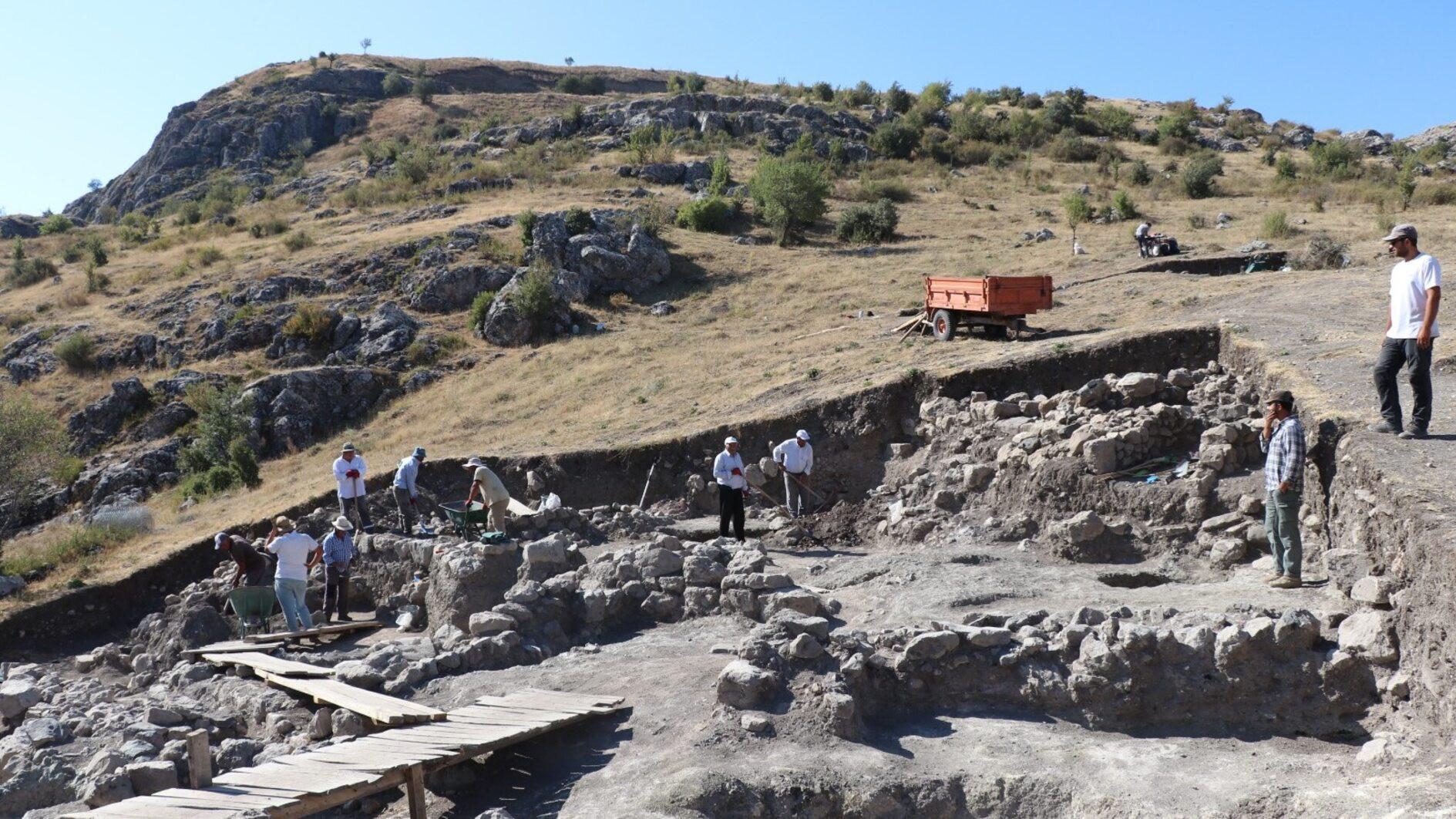
Archaeological excavations at the 8,000-year-old ancient city of Hattusha in the Boğazkale district of Çorum, which started 118 years ago, are continuing this year with the participation of academics from various disciplines.
The archaeological site of Hattusha, which houses the cultural heritage of the Hatti and Hittite civilizations — among Anatolia's earliest civilizations and dating back to 6,000 B.C. — is listed as a UNESCO "World Cultural Heritage" and "World Memory" site.
Located 80 kilometers southwest of Çorum, Hattusha and Yazılıkaya Temple, surrounded by 7 kilometers of walls and with a settlement area of 2 square kilometers, welcomes its guests with its facade that changes every season of the year.
The historical site has a history of 8,000 years and takes its visitors on a journey through time. Excavations at the site, which served as the capital of the Hittite civilization for approximately 450 years, began in 1906 and have been ongoing for 118 years.
Academics from different countries and branches participate in the excavations carried out since 2006 under the chairmanship of Professor Andreas Schachner on behalf of the German Archaeological Institute, contributing to the country’s archaeological literature.
Speaking to the state-run Anadolu Agency, Schachner explained that because Hattusha was the capital for an extended period and has an 8,000-year history, the excavations there represent a unique archive.
Stating that they may encounter surprises during the excavations in Hattusha, Schachner said, "You don't know what awaits you in Boğazköy [Hattusha] every year. Some years proceed normally, while others can bring unexpected surprises. Let's see what this year has in store for us."
Schachner stated that their work primarily focused on the Hittite era in Hattusha, concentrating on the Great Citadel on the northwestern slope of Hattusha, the Palace, and the western slope of the Upper City. He noted that while individual findings from the excavations might seem insignificant on their own, they provide valuable information about various periods when evaluated together with their surroundings.
“When we examined the hieroglyphs discovered in Yerkapı two years ago, we learned many new things about the planning of the Upper City and its ideological meaning at the time. The same goes for the Kalasma tablet or the artwork inlaid on bone. They all tell us something different. Last year, a coin was found for the first time in the Iron Age layer. We determined that the coin was from the city of Miletus. We see that there was such long-range exchange in the Iron Age. Or we found a lead seal from the Byzantine period in a layer. These types of lead seals were used as seals for a text written on a piece of paper at the time. This seal was on the back of a text sent by a priest in Antakya. Thus, we can see that there was a network of relationships that went all the way to Antakya. In Hattusha, we can come across surprising findings in every period."
Noting that the archaeological excavations in Hattusha are long-term and very important, Schachner said, “We have to reevaluate old findings with every new one. Hattusha has been inhabited since 6,000 B.C. We find and evaluate the traces of each period and they provide information about the lifestyle, agricultural style, animals and culture of the people living in Northern Central Anatolia. Thus, we gain information about these periods by making comparisons. Therefore, Hattusa serves as a unique historical archive. Of course, its most important period is the Hittite period because it was the capital. The data we gather provides insights into political relations, religious practices and international connections, helping to shed light on this crucial period."